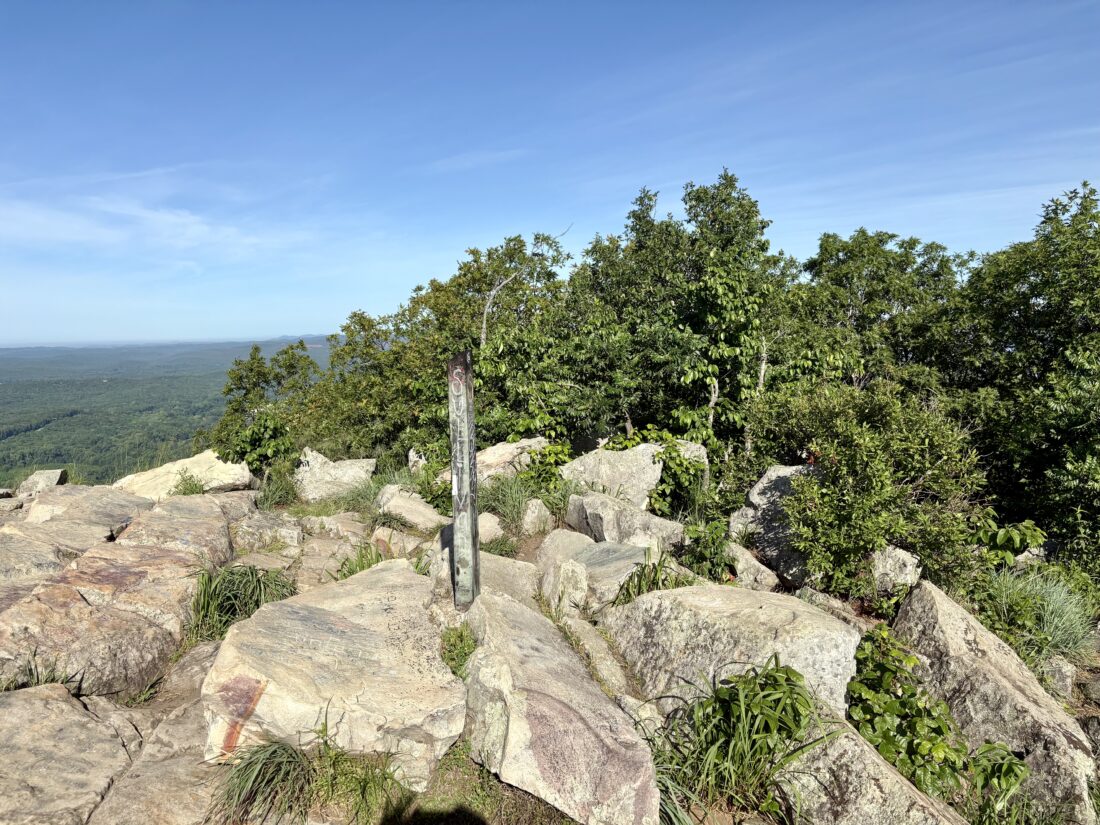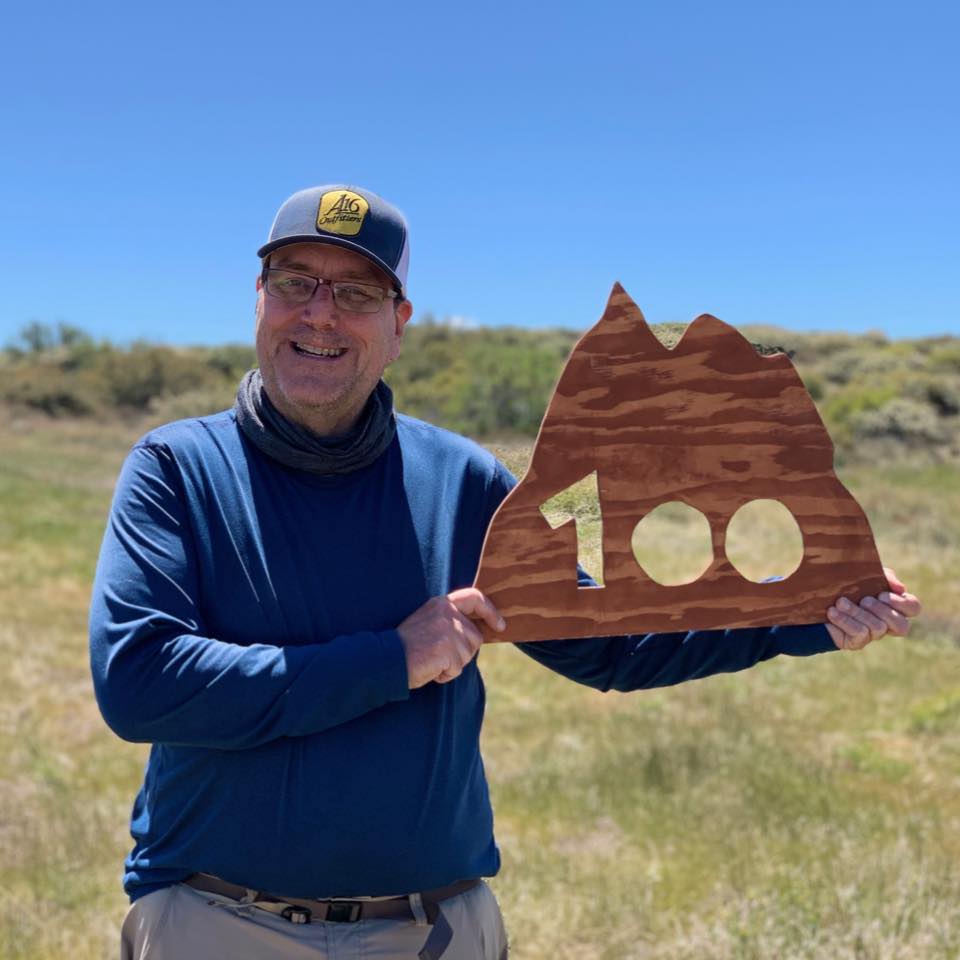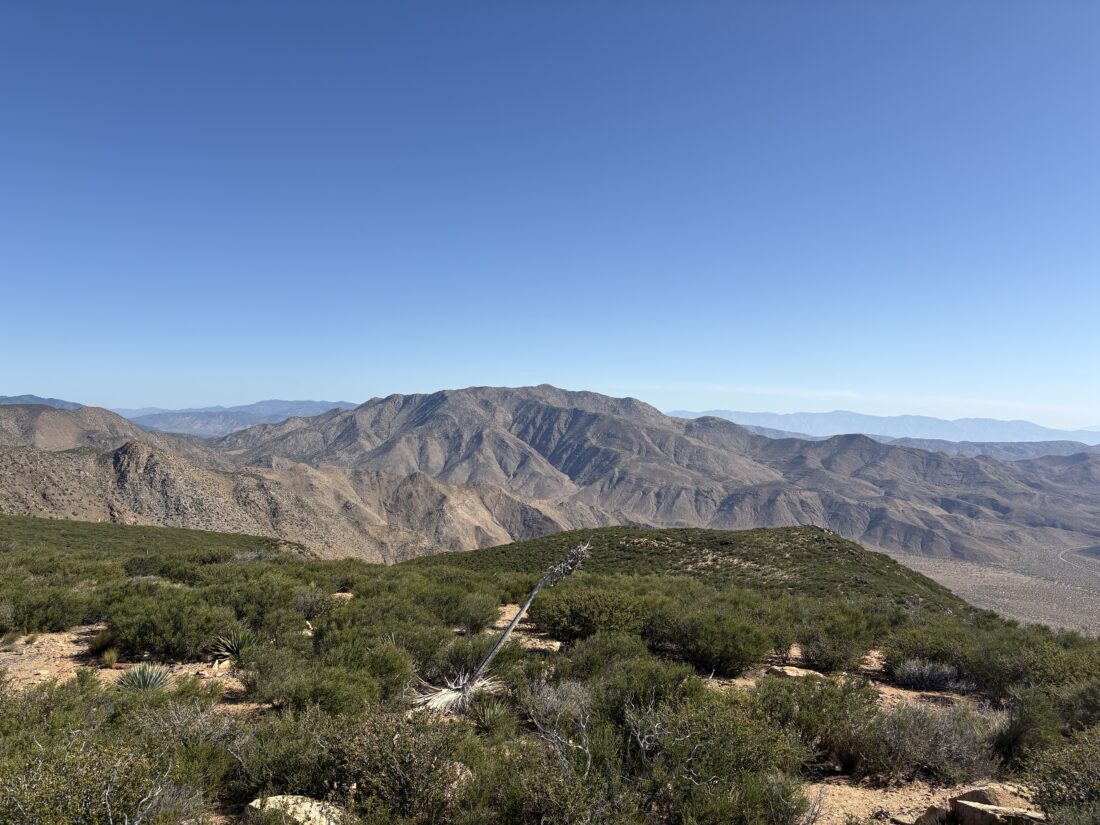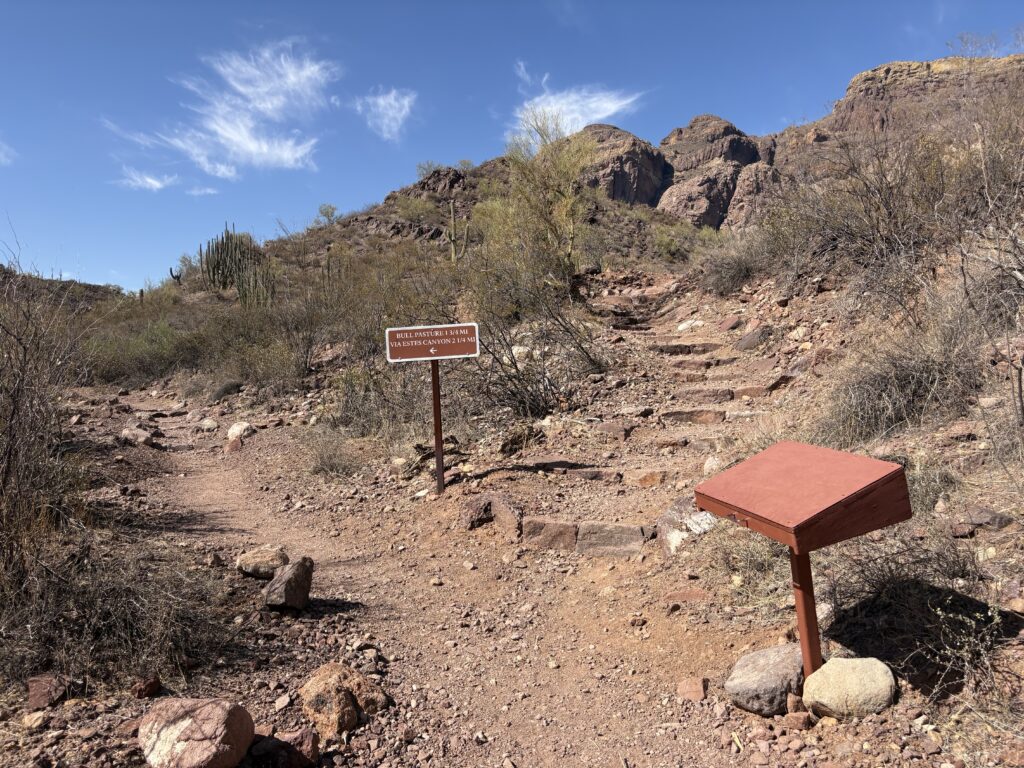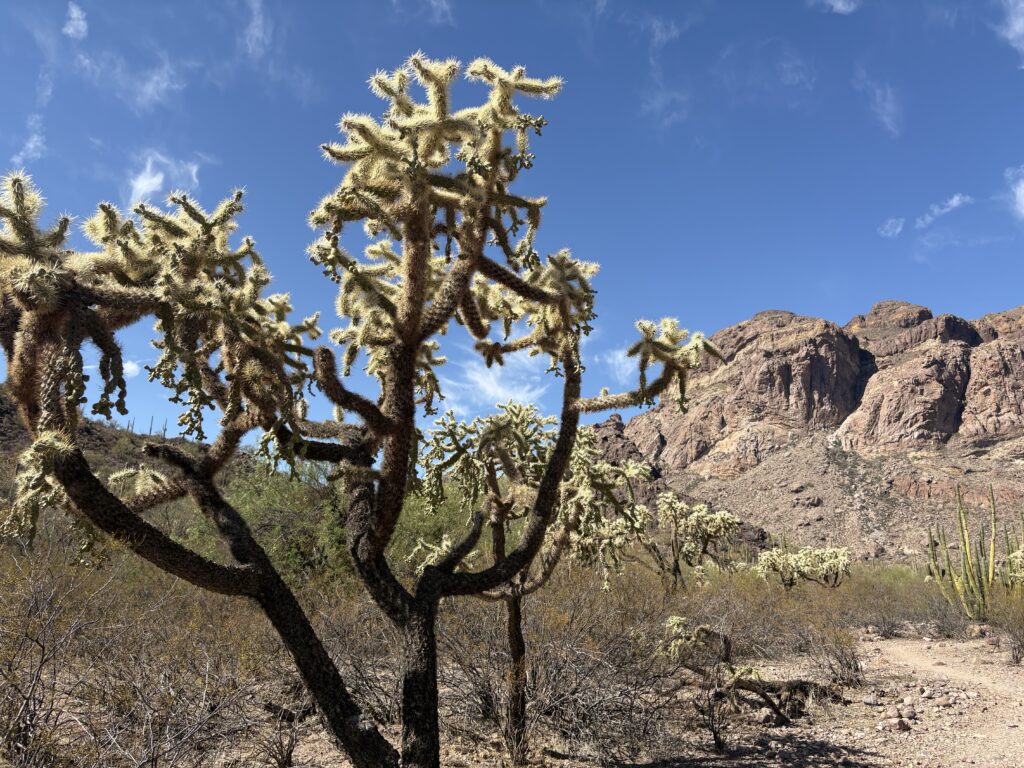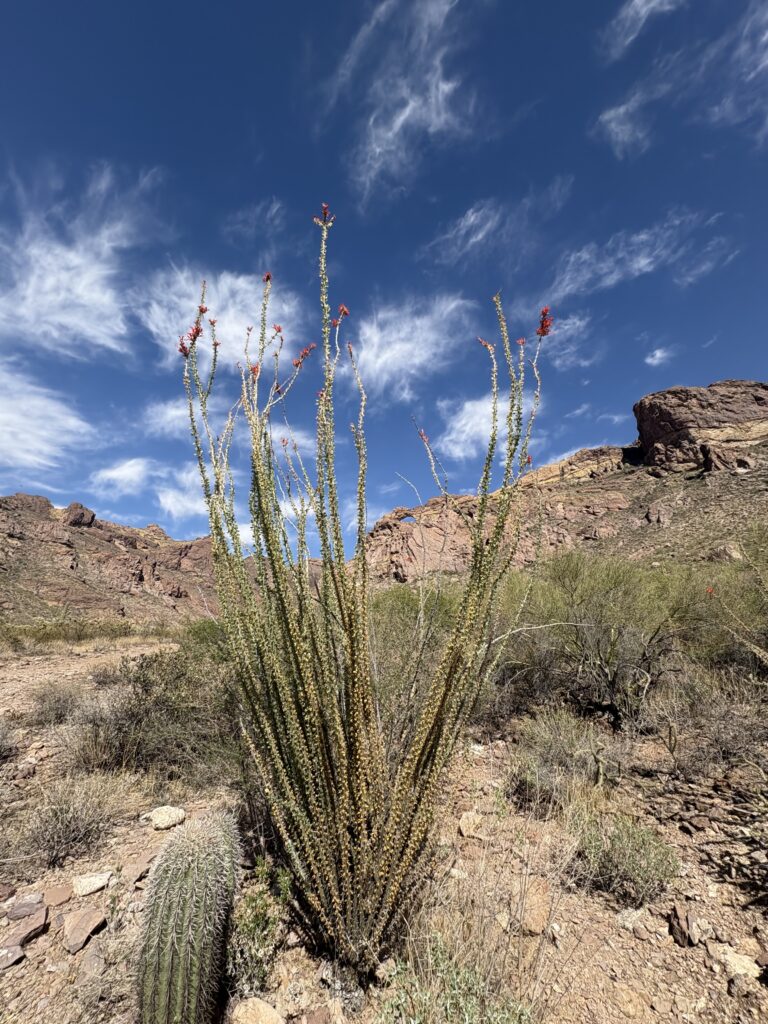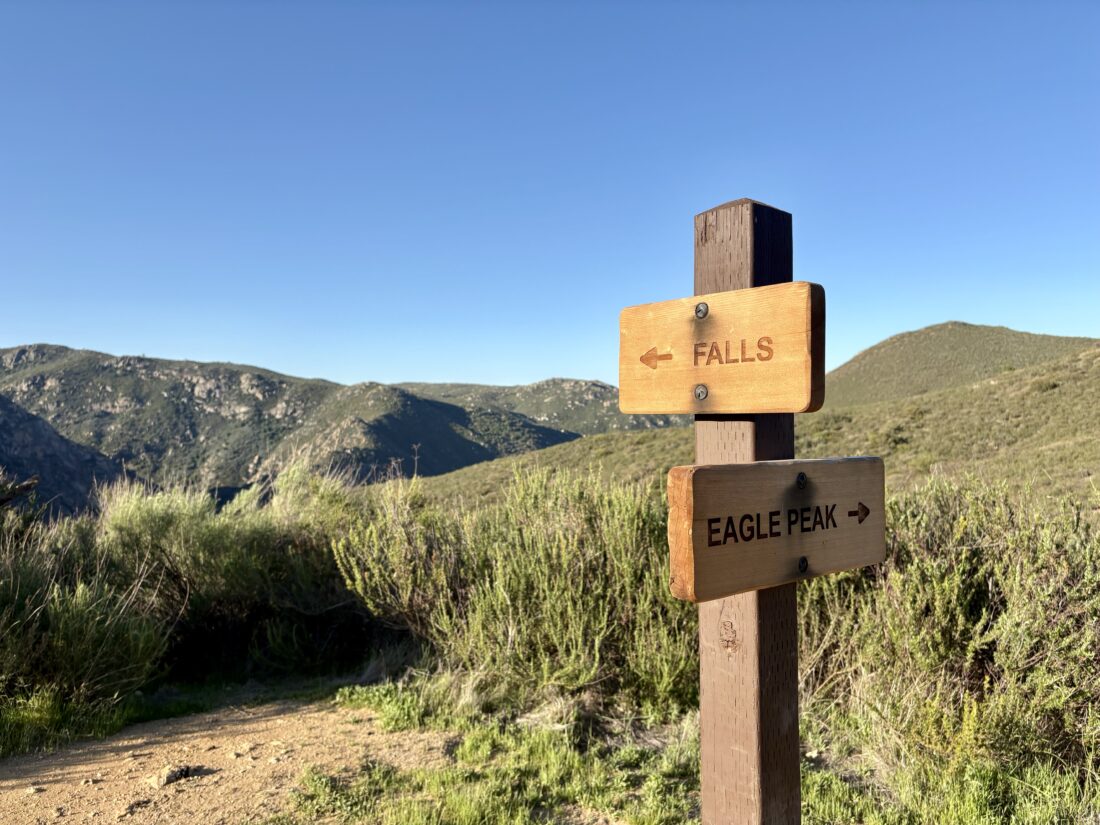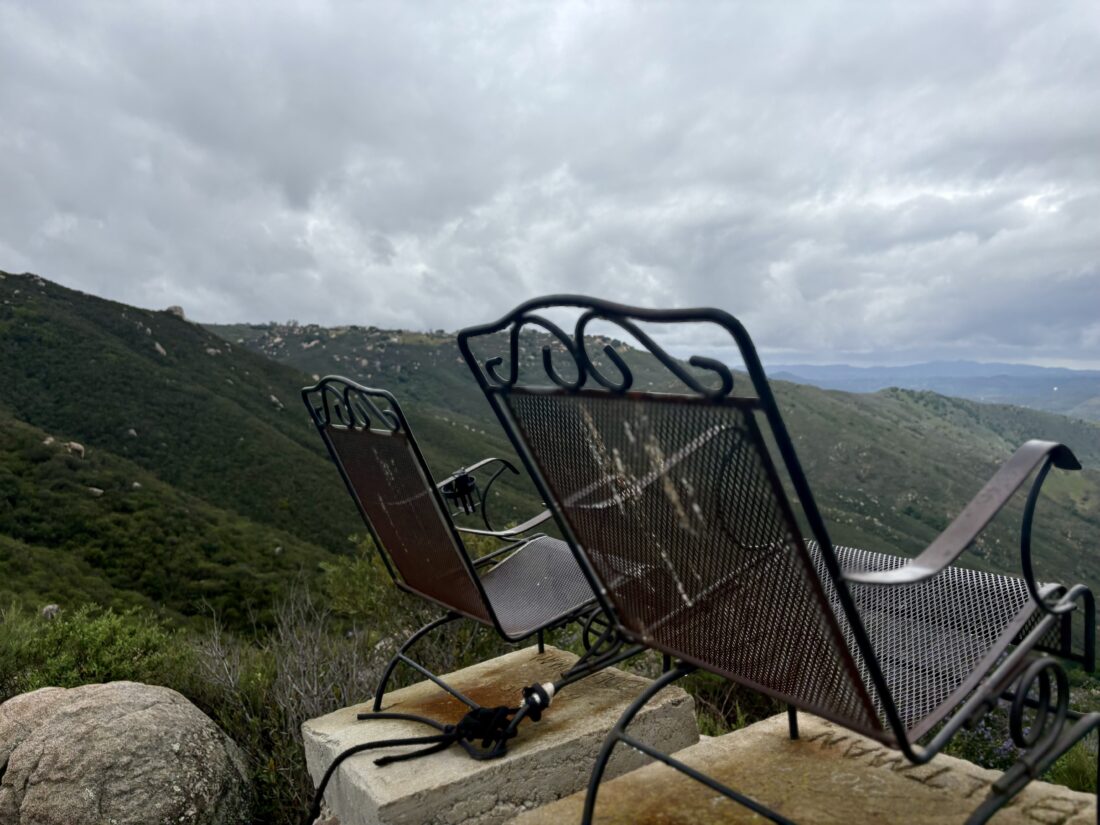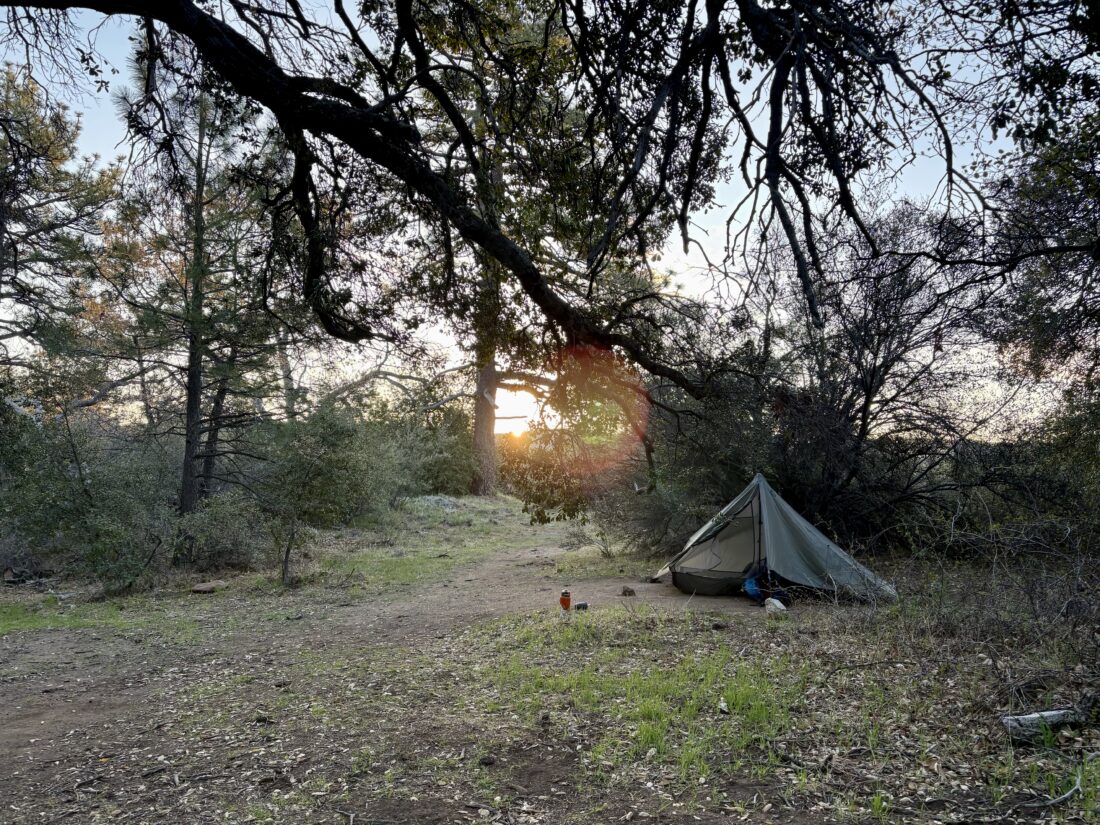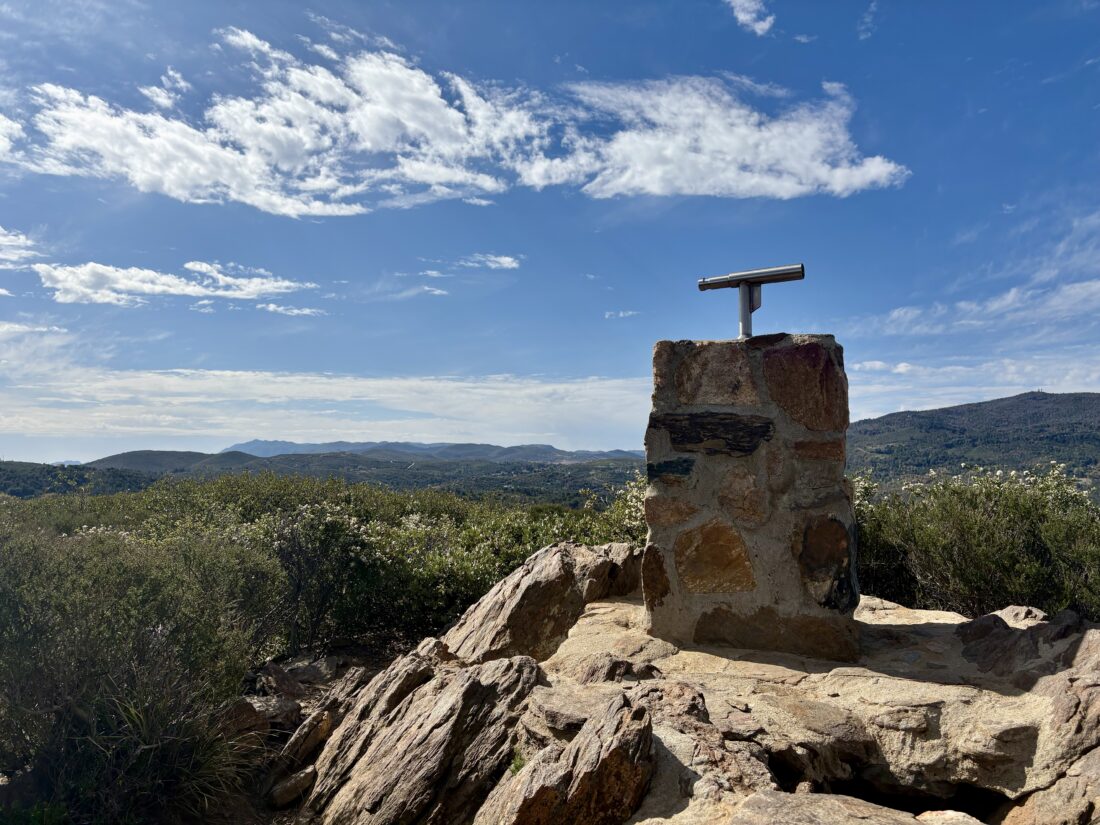We were back in Arkansas for my sister’s celebration of life, and originally hoped to drive over to Hot Springs to get in a hike on Saturday morning. However, the chaos around getting my daughter to Little Rock from DC had me staying closer to Little Rock. Instead, I opted to hike Pinnacle Mountain, which was just 20 minutes from the hotel. I had climbed this peak in 2018 on my first visit to Little Rock with my son and nephew-in-law. This time, I opted to ascend the peak from the East Summit trail instead. There were a few cars in the parking lot when I pulled in. A nice trailhead sign guided me into the woods and onto the trail. I followed the blazes through the forest, being mindful of the roots and rocks. These trails are quite different from those back in San Diego. Soon, I came to the base of the mountain, and it was time to gain 510 feet in just about 0.2 miles. Not only was this approach steeper, but the entire ascent is Class 2. The blazes guided me up the rocks toward the summit. While it was early, it was warm and muggy. I soon heard voices and knew the summit was close.








I stood atop the summit and once again took in the view. My daughter was finally on her last leg of her journey, and I was no longer worried about having to help her navigate options to get to Little Rock in time. After enjoying the views, I descended via the West Summit Trail. While initially, the trail was rocky, it eased up and became more trail-like. Benches were placed along the route to provide respite for those not physically capable of the climb or who just needed a rest.
Once at the base of the trail, I took the Base Trail around the south side of the mountain. Here, I would spy some mushrooms from time to time as I cruised along the mostly flat trail back to the car.










On the drive back, I stopped at the Pinnacle Mountain Visitor Center. This is a beautiful building and I explored the exhibits some before grabbing some stickers and a better hiking map. I hoped that I might return the next day for some more trail time. My stats for this hike were: 2.58 miles, with 784 feet of gain in 1:34.
I am an avid peak bagger, sometimes backpacker, and former sea kayaker living in San Diego. I am the co-author of Urban Trails: San Diego, coming in Spring 2026!
In 2019, I became the third person to complete the San Diego 100 Peak Challenge. Not stopping with that accomplishment, I set my sights on the harder San Diego Sierra Club 100 Peak list, which I completed in 2021. In addition, I have conquered several Six-Pack of Peaks challenges (SoCal, San Diego, Central Coast, and both the Arizona-Winter and Arizona-Summer). I am looking forward to exploring new summits and new adventures across the southwest.
